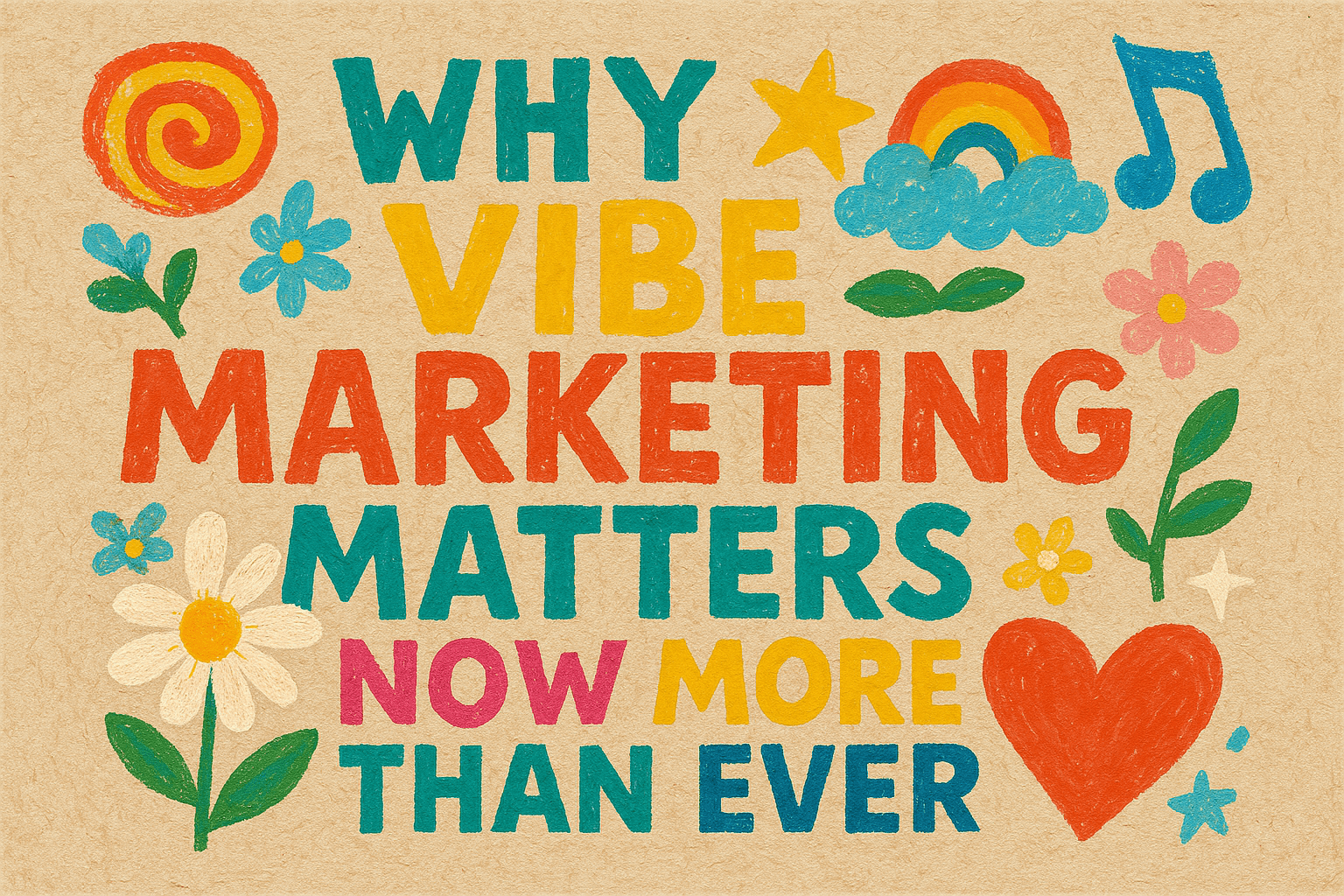
In the world of modern marketing, what you say matters—but how it makes people feel matters even more.
Enter Vibe Marketing: a powerful, culture-first approach that’s transforming how brands capture attention, build loyalty, and drive engagement.
We’re no longer just marketing products—we’re marketing presence, emotion, and identity.
What Is Vibe Marketing?
Vibe marketing is the strategic use of emotion, aesthetic, storytelling, and cultural relevance to create a specific feeling around your brand.
Rather than focusing solely on product features, specs, or discounts, vibe marketing asks:
“How do we want people to feel when they engage with our brand?”
It’s about shaping perception, building a mood, and inviting audiences into an emotional experience that sticks.
Key Elements of Vibe Marketing
Here are the core components that make vibe marketing stand out:
1. Emotion-Driven Content
People make decisions based on how things make them feel. Vibe marketing leans into feelings first, facts second.
Example: Nike’s campaigns don’t just talk about shoes—they ignite a sense of purpose, resilience, and empowerment.
2. Cultural Relevance
This strategy lives and breathes in culture—trends, subcultures, movements. It aligns with what matters to your audience right now.
Example: Fenty Beauty built a movement around inclusion before it was a buzzword.
3. Visual & Sonic Aesthetics
Music, color palettes, video pacing, typography—every element contributes to the vibe. The goal? Instantly recognizable and emotionally resonant content.
Example: Apple’s minimalist product launches feel sleek, focused, and innovative—every time.
4. Community-First Mentality
Instead of broadcasting to the masses, vibe marketing builds tribes—communities of people who see your brand as a reflection of themselves.
Example: Glossier turned their customers into brand ambassadors by spotlighting their stories and reviews.
5. Subtle Storytelling
You don’t need to explain everything. Vibe marketing relies on mood, tone, and implied meaning. The storytelling is often layered, abstract, or open to interpretation—which makes it memorable.
Example: A coffee brand showing warm, slow mornings rather than listing roast types or caffeine content.
Why Vibe Marketing Works
In today’s noisy digital landscape, people don’t remember ads—they remember how they felt when they saw them.
Here’s why this matters:
Emotional Connection = Loyalty
Brands that evoke strong emotions build deeper relationships. Consumers aren’t just customers—they’re fans.
Content That Feels Right Gets Shared
Emotionally-driven content tends to perform better on social. It earns more likes, shares, saves, and comments—not because it’s clever, but because it connects.
Gen Z & Millennials Demand Meaning
These generations care less about status and more about alignment. They follow brands that reflect their values, interests, and vibes.
People Crave Identity & Belonging
Vibe marketing turns your brand into a mirror. It reflects back who your audience wants to be—or already is—and gives them a reason to belong.
Real-World Examples
Let’s break down a few brands that are winning with vibe marketing:
| Brand | Vibe | What They Do Right |
|---|---|---|
| Spotify Wrapped | Personalized, nostalgic, expressive | Turns user data into identity-driven, shareable moments. |
| Alo Yoga | Calm, balanced, aspirational | Sells a lifestyle of wellness, not just leggings. |
| The CREATIVE Brand | Bold, electric, unified | Taps into creative energy and community with a powerful message: creativity is a force. |
| Creative Connect | Inspiring, collaborative, culture-forward | Not just a podcast—it’s a movement for creatives to connect and shine. |
How to Start Using Vibe Marketing
Here’s a quick roadmap to infuse vibe into your next campaign or brand refresh:
1. Define the Emotion
Ask: What do we want people to feel? Inspired? Empowered? Calm? Curious?
2. Build a Moodboard
Create a visual reference of colors, fonts, music, and imagery that match the vibe you want to create.
3. Audit Your Current Content
Is your brand content giving off the energy you want? Or is it too focused on pushing info?
4. Tell Stories, Not Specs
Focus on storytelling that paints a picture of life with your brand. Keep it subtle. Let people feel the message.
5. Cultivate Culture
Create moments that spark conversation, participation, and pride. Think user-generated content, shared values, and community rituals.
It’s Time to Feel Your Marketing
In a world where attention is limited and trust is fragile, the brands that feel the best will win.
Vibe marketing is not a trend—it’s a transformation.
It shifts your brand from being just another voice online…
to being a mood, a movement, a vibe that people want to be a part of.
What’s the vibe of your brand right now?
Does your audience feel something when they engage with you?
Let’s talk vibe marketing in the comments—or shoot me a message if you want help turning your next campaign into a vibe.
#VibeMarketing #EmotionalBranding #MarketingStrategy #CreativeConnect #BrandIdentity #MarketingTips #GenZMarketing #CommunityBuilding #Storytelling


